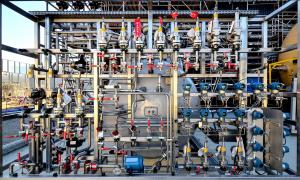Image of the week
Don't get mixed up!
4 Mar 2019
In case of a sudden loss of superconductivity in the ITER magnets (a "quench") the helium that circulates in the coils will be almost instantly discharged into dedicated double-wall quench tanks.
This complex set of hand valves and local readings of pressure, temperature and flow is part of the cooling loop that maintains the temperature inside the quench tanks at 100 K. It will provide field operators with a convenient tool for maintenance operations.
If the tanks were at ambient temperature, the thermal shock caused by cryogenic helium discharged from the magnets at just above 4 K (minus 269 °C) would result in considerable stress and shrinkage to the tank structures.
In order to prevent such a potentially damaging event, the inner vessels of the tanks must be cooled to cryogenic temperature whenever the machine is in operation. This is achieved through a cooling loop that maintains the temperature inside the tanks at 100 K (minus 173 °C)—a temperature at which shrinking has already occurred.
This valve and instrumentation panel outside of the cryoplant is part of that loop. Although measurement signals and activators from all cryogenic systems interface with the CODAC human-machine interface in the local cryo-control room, the outdoor instrumentation panel with its dozens of hand valves and local readings of pressure, temperature and flow provides field operators with a convenient tool for maintenance operations.


